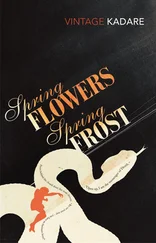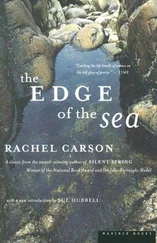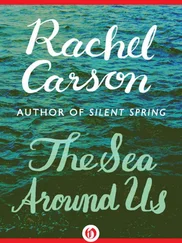One of the first to envision such use of microorganisms was the 19th-century zoologist Elie Metchnikoff. During the concluding decades of the 19th and the first half of the 20th centuries the idea of microbial control was slowly taking form. The first conclusive proof that an insect could be brought under control by introducing a disease into its environment came in the late 1930’s with the discovery and use of milky disease for the Japanese beetle, which is caused by the spores of a bacterium belonging to the genus Bacillus. This classic example of bacterial control has a long history of use in the eastern part of the United States, as I have pointed out in Chapter 7.
High hopes now attend tests of another bacterium of this genus— Bacillus thuringiensis —originally discovered in Germany in 1911 in the province of Thuringia, where it was found to cause a fatal septicemia in the larvae of the flour moth. This bacterium actually kills by poisoning rather than by disease. Within its vegetative rods there are formed, along with spores, peculiar crystals composed of a protein substance highly toxic to certain insects, especially to the larvae of the mothlike lepidopteras. Shortly after eating foliage coated with this toxin the larva suffers paralysis, stops feeding, and soon dies. For practical purposes, the fact that feeding is interrupted promptly is of course an enormous advantage, for crop damage stops almost as soon as the pathogen is applied. Compounds containing spores of Bacillus thuringiensis are now being manufactured by several firms in the United States under various trade names. Field tests are being made in several countries: in France and Germany against larvae of the cabbage butterfly, in Yugoslavia against the fall webworm, in the Soviet Union against a tent caterpillar. In Panama, where tests were begun in 1961, this bacterial insecticide may be the answer to one or more of the serious problems confronting banana growers. There the root borer is a serious pest of the banana, so weakening its roots that the trees are easily toppled by wind. Dieldrin has been the only chemical effective against the borer, but it has now set in motion a chain of disaster. The borers are becoming resistant. The chemical has also destroyed some important insect predators and so has caused an increase in the tortricids—small, stout-bodied moths whose larvae scar the surface of the bananas. There is reason to hope the new microbial insecticide will eliminate both the tortricids and the borers and that it will do so without upsetting natural controls.
In eastern forests of Canada and the United States bacterial insecticides may be one important answer to the problems of such forest insects as the budworms and the gypsy moth. In 1960 both countries began field tests with a commercial preparation of Bacillus thuringiensis. Some of the early results have been encouraging. In Vermont, for example, the end results of bacterial control were as good as those obtained with DDT. The main technical problem now is to find a carrying solution that will stick the bacterial spores to the needles of the evergreens. On crops this is not a problem—even a dust can be used. Bacterial insecticides have already been tried on a wide variety of vegetables, especially in California.
Meanwhile, other perhaps less spectacular work is concerned with viruses. Here and there in California fields of young alfalfa are being sprayed with a substance as deadly as any insecticide for the destructive alfalfa caterpillar—a solution containing a virus obtained from the bodies of caterpillars that have died because of infection with this exceedingly virulent disease. The bodies of only five diseased caterpillars provide enough virus to treat an acre of alfalfa. In some Canadian forests a virus that affects pine sawflies has proved so effective in control that it has replaced insecticides.
Scientists in Czechoslovakia are experimenting with protozoa against webworms and other insect pests, and in the United States a protozoan parasite has been found to reduce the egg-laying potential of the corn borer.
To some the term microbial insecticide may conjure up pictures of bacterial warfare that would endanger other forms of life. This is not true. In contrast to chemicals, insect pathogens are harmless to all but their intended targets. Dr. Edward Steinhaus, an outstanding authority on insect pathology, has stated emphatically that there is “no authenticated recorded instance of a true insect pathogen having caused an infectious disease in a vertebrate animal either experimentally or in nature.” The insect pathogens are so specific that they infect only a small group of insects—sometimes a single species. Biologically they do not belong to the type of organisms that cause disease in higher animals or in plants. Also, as Dr. Steinhaus points out, outbreaks of insect disease in nature always remain confined to insects, affecting neither the host plants nor animals feeding on them.
Insects have many natural enemies—not only microbes of many kinds but other insects. The first suggestion that an insect might be controlled by encouraging its enemies is generally credited to Erasmus Darwin about 1800. Probably because it was the first generally practiced method of biological control, this setting of one insect against another is widely but erroneously thought to be the only alternative to chemicals.
In the United States the true beginnings of conventional biological control date from 1888 when Albert Koebele, the first of a growing army of entomologist explorers, went to Australia to search for natural enemies of the cottony cushion scale that threatened the California citrus industry with destruction. As we have seen in Chapter 15, the mission was crowned with spectacular success, and in the century that followed the world has been combed for natural enemies to control the insects that have come uninvited to our shores. In all, about 100 species of imported predators and parasites have become established. Besides the vedalia beetles brought in by Koebele, other importations have been highly successful. A wasp imported from Japan established complete control of an insect attacking eastern apple orchards. Several natural enemies of the spotted alfalfa aphid, an accidental import from the Middle East, are credited with saving the California alfalfa industry. Parasites and predators of the gypsy moth achieved good control, as did the Tiphia wasp against the Japanese beetle. Biological control of scales and mealy bugs is estimated to save California several millions of dollars a year—indeed, one of the leading entomologists of that state, Dr. Paul DeBach, has estimated that for an investment of $4,000,000 in biological control work California has received a return of $100,000,000.
Examples of successful biological control of serious pests by importing their natural enemies are to be found in some 40 countries distributed over much of the world. The advantages of such control over chemicals are obvious: it is relatively inexpensive, it is permanent, it leaves no poisonous residues. Yet biological control has suffered from lack of support. California is virtually alone among the states in having a formal program in biological control, and many states have not even one entomologist who devotes full time to it. Perhaps for want of support biological control through insect enemies has not always been carried out with the scientific thoroughness it requires—exacting studies of its impact on the populations of insect prey have seldom been made, and releases have not always been made with the precision that might spell the difference between success and failure.
The predator and the preyed upon exist not alone, but as part of a vast web of life, all of which needs to be taken into account. Perhaps the opportunities for the more conventional types of biological control are greatest in the forests. The farmlands of modern agriculture are highly artificial, unlike anything nature ever conceived. But the forests are a different world, much closer to natural environments. Here, with a minimum of help and a maximum of noninterference from man, Nature can have her way, setting up all that wonderful and intricate system of checks and balances that protects the forest from undue damage by insects.
Читать дальше












